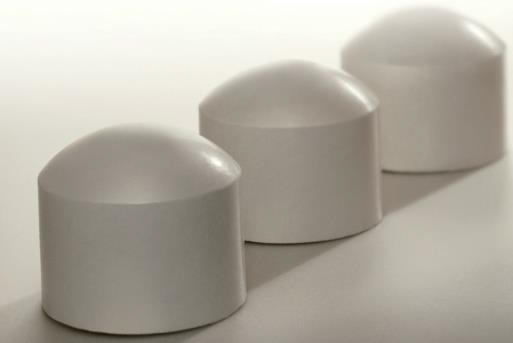
Accross the site and through our blogs we have discussed the differences between active and passive fire rating and explained the role of passive systems in the protection of structural elements within the building.
However, an area we have neglected to cover – predominantly as it was a niche concept in its infancy – has been the area of extrusions such as bolts and how to protect them.
So, What are fire rating extrusions?
It is a fancy term for something quite simple really. In a nutshell, Fire Rating extrusions are actually small elements used in construction which contribute to the efforts taken to ensure that a building is adequately and comprehensively protected and fire-rated. When it comes to steel, the most popular of these are bolt caps.
Fireproofing steelwork connections
As we all know, connecting structural steel in construction often requires the use of bolts, screws, and nuts. Albeit small in scale compared to the steel they are joining, these elements have a mighty job – holding together the steel to which they are attached. They protrude off the steel, yet, for whatever reason, are often overlooked when we talk about fireproofing a building or structure.
At Permax, our focus lies not only in ensuring that the steel (and timber) used to construct is adequately protected from the devastation of fire, by thin-film intumescents, but that the systems recommended are robust enough to withstand damage, are optimised to reduce costs and are fit-for-purpose. In delivering solutions to clients, our scope has shifted to include not just the steel, but the elements that surround the steel and which could have an impact on the performance of the steel and fire protection, which is why we actively promote the inclusion of bolt caps in all fire specifications as necessary.
Why are bolt caps important?
Did you know that in elevated temperatures, specifically from 550 degrees Celsius and up, bolts start to deform and shear as the metals shrink in reaction to the high temperature? When this happens, the structural integrity of steelwork weakens, and if this happens on the vertexes and joins of steel, then there is risk of catastrophic collapse of elements of the building.
For this very reason, the steel bolts which hold the steel together must be protected, and this protection can be achieved through the use of Bolt Caps, Quite simply, these devices are what their name implies – a cap that is hammered over the top of a bolt. In the case of intumescent bolt caps, applying it to steel bolts gives the bolts improved resistance to the effects of fire.
And yes, you might ask why not just spray the bolts with the same materials as the steel? In short, you can, but choose to apply intumescent coating over the bolts and welds, but once done, you cannot easily remove the protection for maintenance, and may find that the extrusions are more easily damaged when applied as a thin film, not as a cap.
Bolt Caps Achieve the Required FRL
The beauty of bolt caps is that not only are they easy to apply, but they also reach the required FRLs for most building structures.
At Permax, we have adhesive-free, paint-free, and non-bonded bolt caps that have been tested to ensure excellence, quality, and achievement of FRLs.
The range of Bolt caps recommended by our team withstand the harshest tests and are compatible with intumescent coatings up to 120 minutes. In fact, Typhoon Bolt caps have been tested, evaluated & demonstrated to give up to 3 hours cellulosic, fire protection with no volatile emission on site and tested for a 1000 hours to ASTM D117.
If you want to learn more about bolt caps and their applications, consult with one of our fire engineers at Permax today.
Get in Touch
Speak to the Australian leaders in passive fire protection
You are about to download a file from the Permax site. Please note All technical advisory notes generated by Permax are based on research papers, indicative fire tests and any other existing evidence. These documents should not be used as an official evidence as design engineers should review the information and determine the reliability of the documents.
Permax constantly update the documentations based on the new fire testing outcomes and change of standards and regulations. To ensure the documents you read are up-to-date, please contact the Permax technical team.




